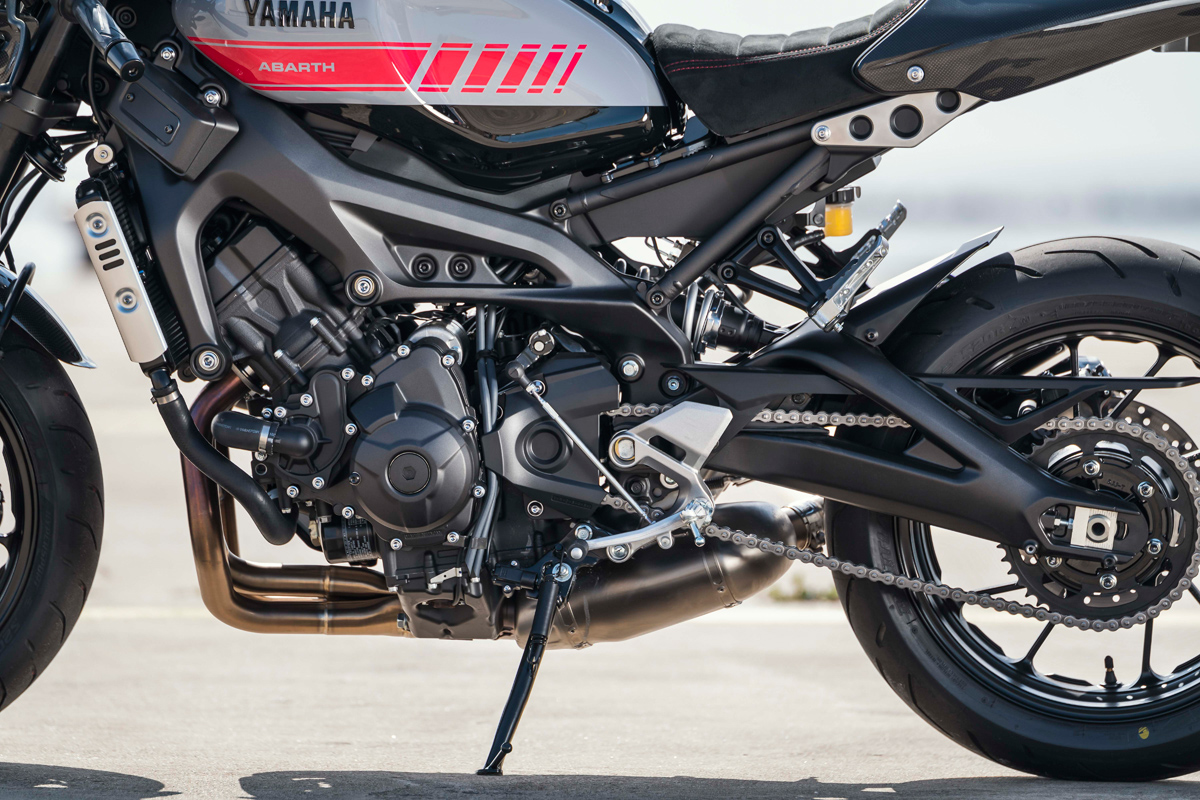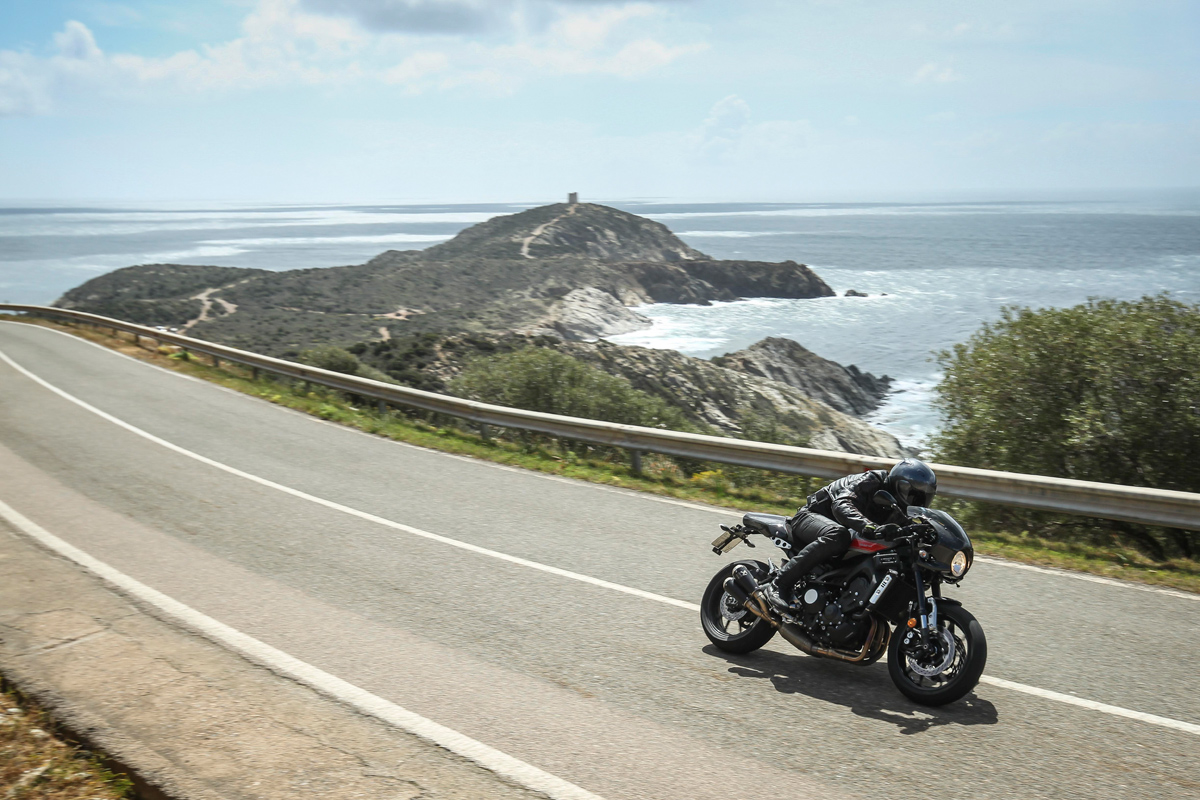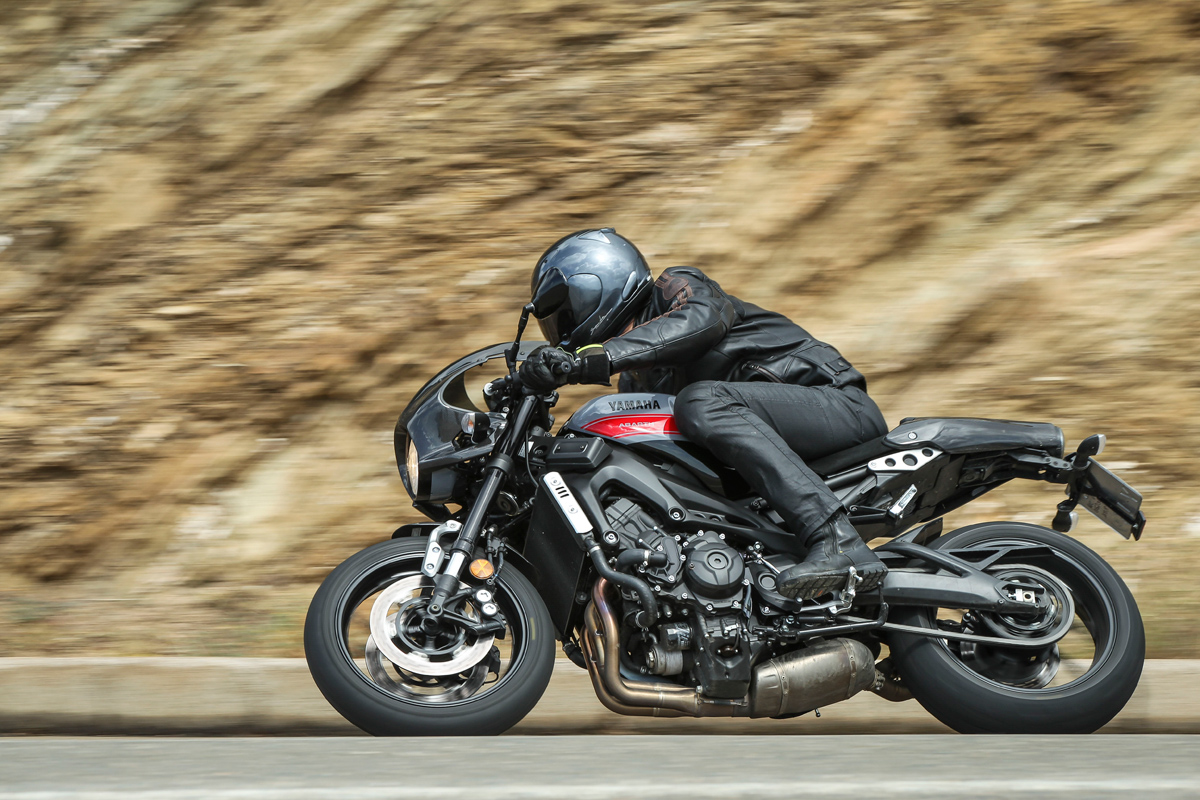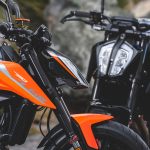Perhaps some pain as well as pleasure was inevitable from a bike with Abarth’s scorpion logo on its petrol tank. The Turin-based tuning shop has created many four-wheeled specials in recent years, notably a Fiat 500-based hot-rod called the 695 that features tweaked engine, uprated Brembo brakes and plenty of carbon-fibre.
And Abarth hasn’t held back with this two-wheeled model, which follows the firm’s long-term sponsorship of Yamaha’s MotoGP race team. The XSR900 Abarth has attractive, café-racer styling but comes with an aggressive, low-handlebarred riding position that puts a lot of weight on its rider’s wrists, making the bike best suited to short, sharp trips.
The Abarth is being produced in a limited run of 695 units, each with a numbered plaque on the frame. The standard XSR’s format of 847cc, 12-valve triple engine and lightweight aluminium frame is retained, along with the peak output of 114bhp at 10,000rpm that is also shared with the MT-09 from which the XSR is derived.

The most obvious differences are carbon-fibre parts: bikini fairing, front mudguard and a pillion seat cover that encircles a round rear light that has a hint of jet engine about it. The seat itself has a suede-like cover with red stitching. Footrests are retained but the standard XSR’s raised handlebar is replaced by a one-piece “Ace” style bar that is wide and sharply turned down.
Carbon parts are left bare; the Abarth’s tank is finished in a grey with a black top and red speed-blocks. Finishing touch is a similarly distinctive exhaust system, made by Slovenian specialists Akrapovic from titanium and stainless steel, and ending with a pair of black-wrapped silencers on the right of the bike.
The Abarth’s fairing gives it something of the look of Yamaha’s now discontinued XJR1300 Racer, but simply lifting it off the sidestand confirms that this bike is much lighter and more modern. At 195kg brim-full the Abarth is no heavier than the standard XSR, but feels completely different as you lean forward and down to the bars – crouching so far that the round instrument console is so close that it’s hard to read.
Despite that the Abarth feels good as it pulls away, immediately demonstrating the broad torque spread and improved fuelling that have helped make the XSR900 and MT-09 popular in recent years. The flexible motor punches effortlessly out of turns, revving smoothly towards the 11,250rpm redline, and emitting a burbly sound from the twin-can Akrapovic system. The gearbox shifts sweetly too although it’s disappointing that this triple isn’t fitted with the quick-shifter that is standard with the MT-09.
On straight roads the fairing proves its worth, doing a decent job of keeping off the breeze as the Abarth revs harder and charges smoothly towards its 140mph-or-so top speed. But flicking the Yamaha into turns is not as easy as it might have been. Although the handlebar seems wide for such a racy set-up, giving plenty of leverage, the lazy steering geometry means firm pressure is required to get the bike to change direction in a hurry. Thankfully braking – via the Abarth’s unchanged blend of four-piston radial front calipers and 298mm discs – quickens the steering to good effect.

It’s a proper café racer, the XSR900 Abarth, in that it likes to be ridden fast and hard, so the wind pressure can take some weight off your wrists on the straights, and the suspension can work better in the turns. It’s a much more up-to-date and competitive bike than the old-school, aircooled XJR1300 Racer whose belligerent attitude it inherits. Provided you can live with the extreme riding position and heavy steering, it’s a quick, characterful machine with a welcome touch of aggression.
It’s also tolerably practical in other respects, at least by café racer standards. The mirrors work well, switchgear is basic but effective, and the fuel-efficient, 12-valve engine gives a range of 100 miles or more from the unchanged 14-litre tank. Most riders will be wanting to stop for a forearm massage by then, anyway.

Specials like this tend to come with a financial sting in the tale, but one final advantage of this bike being derived from Yamaha’s MT-09 platform is that the base triple is so competitively priced that even this glamorous, limited-edition spin-off model is not outrageously expensive. The Abarth costs roughly 20 per cent more than the standard XSR900 and 30 per cent more than the MT-09 (at £9999 in the UK), but is still cheaper than rival café racers including BMW’s R nineT Racer and Triumph’s Thruxton.
Yamaha’s Turin-tweaked triple is an unashamedly hardcore machine that won’t suit every rider, even so. Given a similar budget, I’d be tempted to upgrade a standard XSR or MT with Öhlins suspension or other parts from Yamaha’s accessory list. But if your list of essential features for a classy sports bike puts café racer style and exclusivity above comfort and ultimate performance, you’d better strike fast before the last of those 695 Abarths is sold.
By Roland Brown, Photos by Alessio Barbanti, Jonathan Godin & Henny Stern








